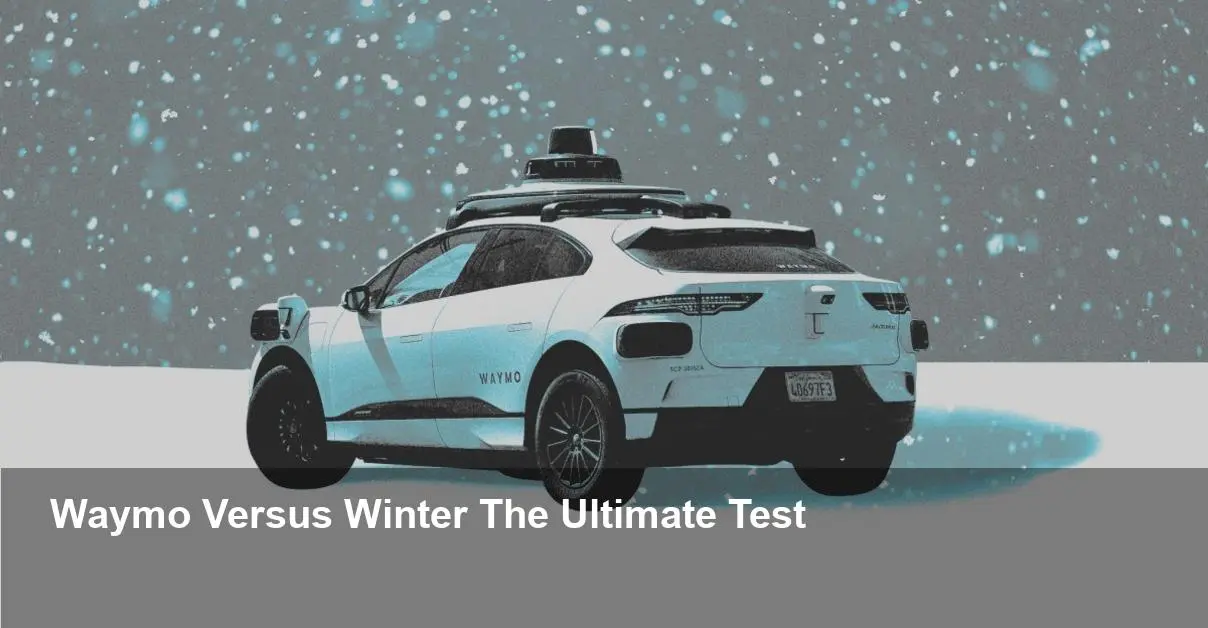- Waymo is ramping up critical winter weather testing as it plans to expand its robotaxi service into colder US cities.
- Snow and ice pose unique challenges for autonomous vehicles, including obstructing sensors and hiding road markings, which could impede the service’s reliability.
- To combat these issues, Waymo is using advanced AI, fleet-wide data sharing, and a new generation of hardware with sensor heaters and wipers.
- The success of these winter trials is crucial for Waymo to compete with human-powered ride-hailing services and prove its year-round viability.
Waymo Confronts Its Toughest Challenge Yet: Winter
After years of successful operations in warm, dry climates like Phoenix and Los Angeles, Waymo is facing its most formidable opponent: a real winter. The company is aggressively testing its autonomous vehicles in snow and ice, a critical step needed to support its planned expansion into East Coast cities such as Boston, New York City, and Washington, DC. The outcome of these tests could determine the future pace of robotaxi adoption across the country.
The Icy Obstacles for Driverless Technology
Unlike flash floods or dust storms, winter conditions present a complex set of problems for self-driving cars. Robert Chen, Waymo’s product lead for weather, acknowledged that this winter season will be “really important” for the company. Snow can completely obscure lane markings and partially cover street signs, creating situations where an AI driver might struggle to make the right decision.
Phil Koopman, an autonomous vehicle expert from Carnegie Mellon University, explained the difficulty. “You may only see a third of the stop sign, but you know it’s a stop sign,” Koopman noted. “Machine learning can have trouble with that if it hasn’t been trained on partially obstructed stop signs.” While he believes Waymo’s multi-sensor suite of lidar, radar, and cameras is better equipped than camera-only systems, the challenge remains significant.
Overcoming a Scarcity of Data
One of the biggest hurdles is a lack of data. Snowy conditions represent a tiny fraction—often less than 5 percent—of Waymo’s total driving data. This scarcity makes it difficult to train and validate the system for rare but critical winter events.
To solve this, Waymo is turning to innovation. The company is using advanced AI, including generative models, to create and analyze data through simulation. This allows engineers to test the vehicles in virtual blizzards, replicating rare conditions to strengthen the AI’s capabilities.
A New Generation of Winter-Ready Hardware
Waymo isn’t just relying on software. Its upcoming sixth-generation Waymo Driver is being engineered specifically to handle severe winter weather. New hardware includes tiny mechanical wipers to clear snow from the rooftop lidar sensors and more powerful heaters to defrost all sensor equipment, ensuring the vehicle can always see.
Smarter Fleet, Safer Roads
Waymo’s fleet also learns collectively. Chen described how the vehicles act as mobile weather stations. “Let’s say the vehicle encounters a slippery patch,” he said. “It’ll actually send that information to the rest of the fleet and now other vehicles in the fleet know that that particular location is slippery.” This real-time data sharing is vital for navigating treacherous spots like black ice.
To compete with services like Uber and Lyft, which operate in almost all weather, Waymo cannot afford to be a “fair weather robotaxi company.” While the company may pause service during extreme storms when most people are staying home, its goal is to build a product that customers can rely on twelve months a year. This winter, Chen and his team are working to ensure that when the temperature drops, Waymo’s robotaxis are ready to roll.
Image Referance: https://www.theverge.com/transportation/805471/waymo-robotaxi-winter-snow-weather-testing
